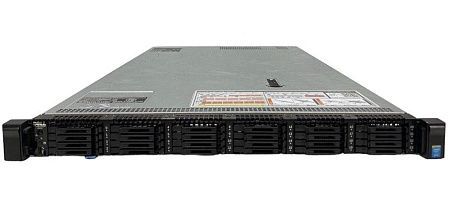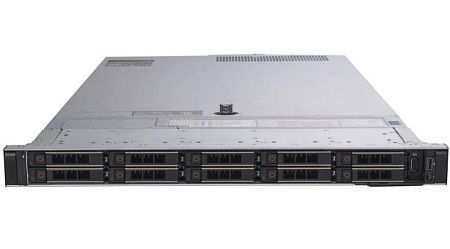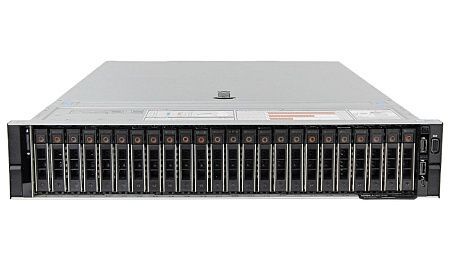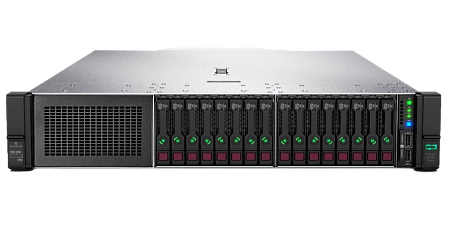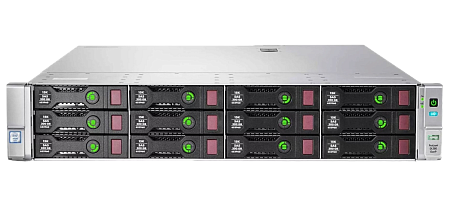Contents of Articles:
- Most popular Linux distro
- Best Linux distro for beginners
- Best Linux distro for programming and advanced users
- Best Linux distro for cyber security
- Best Linux distributions for personal computer
- Best Linux server distro
- Best Linux distro for Windows and MacOS users
- Best Linux distro for gaming
- Best lightweight Linux distro
Linux operating systems are very popular and widely used in the modern world. They are used in data centers, various servers, etc. Today there are a large number of different operating systems of the Linux family (about 5,000 operating systems). Each Linux operating system allows you to customize personalization for the necessary tasks and any user preferences.
However, it is quite complicated. Therefore, we have made a list of the best options for you. Let's consider next categories:
Most popular Linux distro

Debian
Base: Linux kernel.
Architecture: armhf, ppc64el, riscv, s390x, x86_64.
Advantages:
- Support for 32- and 64-bit architectures;
- Lightness;
- High level of reliability and release stability;
- Developed community.
The Debian kernel contains only open source drivers and firmware (FOSS). Installing closed source software will require additional measures.
Reliability is the main metric for new Debian Stable builds. This is the reason why Debian is considered the most stable and most popular Linux distribution as a server OS.
Ubuntu
Base: Debian.
Architecture: aarch64, armel, armhf, i386, i686, mips, mipsel, ppc64el, s390x, x86_64.
Advantages:
- Lots of additional repositories.
- Easy installation (LiveCD is included);
- Easy use of PPA;
- Developed community;
- Large and improved documentation base.
This OS is used by about 30% of Linux-based sites (and the number of users is more than 25 million worldwide).
Ubuntu was originally a temporary third-party version of Debian. Today, it is one of the most reliable and easy to use operating systems of the Linux family. Core, Desktop, Cloud and Server (official implementations of Ubuntu) make it convenient to use the distribution on virtual machines, cloud computing platforms, PCs and IoT devices.
Moreover, Ubuntu is the basis for a number of Canonical's specialized distributions (for example Lubuntu, Xubuntu, Kubuntu, Edubuntu).
Manjaro
Base: Arch Linux.
Architecture: aarch64, x86_64.
Advantages:
- Developed community;
- Easy installation;
- Special Bash scripts are used to manage graphics drivers;
- Automatic detection of equipment;
- Multiple kernels can be installed.
Manjaro is the best Linux distro for beginners. Manjaro performs the following functions:
- Automatically detects system hardware;
- Installs the appropriate software.
This distribution is supported by a huge number of apps (MS Office alternatives included).
MX Linux
Base: Debian (Stable), antiX.
Architecture: armhf, i686, x86_64.
Advantages:
- Simple setup;
- Average sizes;
- High stability;
- Stylish and reliable desktop.
The MX Linux distribution includes the latest version of the Liquorix kernel as well as the kernel from the latest Debian release. MX Linux also has 3 different ecosystems (implemented based on Xfce, Pasma and Fluxbox desktops).
Init systemd service in MX Linux distribution is disabled by default. MX Linux uses the systemd-shim service.
EndeavourOS
Base: Arch Linux.
Architecture: aarch64, x86_64.
Advantages:
- Developed community;
- 2 setting modes;
- Simple system setup;
- Big variety of available desktops.
This Linux distribution was the result of the Antergos project, which was officially completed in 2019. The main purpose when creating this project was to develop an easily maintainable distribution that would have a similar structure to Arch Linux.
EndeavourOS has a regular graphical Calamares installer. It gives an opportunity to deploy a base Arch Linux environment with an Xfce desktop and an embedded Welcome utility provides easy initial system setup.
Best Linux distro for beginners

Linux Lite
Base: Debian, Ubuntu (LTS).
Architecture: i686, x86_64.
Advantages:
- Convenient interface;
- Small amount of resources used;
- Lightness;
- Simple installation and exploitation;
This distribution is designed to make it easier for beginners to migrate from Windows to Linux.
Linux Lite contains the most necessary set of applications for a "quick start". It includes: browser, full office suite, email client and media player.
This distribution uses only necessary tools and is not overloaded with anything superfluous. Instead, it provides the ability to use a set of utilities specialized for a certain purpose. For example:
- Lite Software allows you to quickly install the necessary additional software;
- Lite Welcome shows necessary links for initial OS setup and technical support;
- Lite Users gives an opportunity to manage users.
Nitrux
Base: Debian (Unstable), Ubuntu (LTS).
Architecture: x86_64.
Advantages:
- Lightness;
- A large number of customization options;
- Flexibility;
- An ability to use with the AppImages format.
This GNU/Linux desktop distribution is designed for desktop computers and laptop applications. Nitrux is considered the perfect choice for beginners for its following features:
- Flexible KDE Plasma desktop environment with simplified software package "out of the box".
- Wide range of the Debian kernel features.
Nitrux provides several ready-made templates that allow you to apply the available space on the screen using the best way.
This distribution also offers an ability to install additional Nomad Desktop, developed by the Nitrux team (expands the capabilities of the main Plasma desktop).
Deepin
Base: Debian.
Architecture: x86_64.
Advantages:
- Reliability;
- Convenient interface;
- Security;
- Simple installation.
Deepin is equipped with its own desktop environment under DDE (Deepin Desktop Environment). This distribution is intended for installation in laptops and PCs.
Deepin own applications (DMusic, Deepin Software Center and DPlayer) are adapted for use by both beginners and advanced users. This distro, due to its features, can become a convenient alternative to Windows for home and office.
Best Linux distro for programming and advanced users

Today, IT-specialists prefer open source products of the Linux family, since most servers run on these operating systems. Such operating systems have the following advantages:
- High level of security and stability;
- Freedom of choice when installing software;
- They are free of charge.
Developers usually prefer Linux distributions because of their high compatibility with programming tools and various languages.
Gentoo
Basis: Linux kernel, FreeBSD.
Architecture: i486, i586, i686, x86_64, alpha, arm, hppa, ia64, mips, powerpc, ppc64, sparc64.
Advantages:
- Flexibility in customizing modules.
- Presence of a large number of alternative installation methods;
- Low consumption of RAM;
- Hardware multiplatform.
Based on the original Linux kernel, Gentoo includes its own Portage package management system, which performs the following functions:
- Implementation of precise assembly of packages "for yourself";
- Automation of their work in the target system.
Portage Gentoo can be the basis for a software development platform, a powerful gaming PC, as well as a secure server.
thus, this distribution is considered the best tool for professional developers and networking professionals.
Arch Linux
Base: Linux kernel.
Architecture: x86_64.
Advantages:
- Customization flexibility;
- Rolling release update model;
- Packages dependency control;
- An ability to install non-free software.
Independent Linux distribution designed for advanced users. Arch Linux Installer offers a stable base, on the basis of which users can create a selective configuration by themselves. Using an Arch Build System (ABS) tool you can install the required packages.
Pacman own package manager is used by this distribution to install updates with full dependency tracking. Arch Linux delivers notable application version popularity due to the continuous update deployment model that underlies this distribution.
Slackware Linux
Base: Linux kernel.
Architecture: arm, i586, s390, x86_64.
Advantages:
- Work stability;
- Commercial support is included;
- Simplicity of the device;
- Developed community.
One of the first Linux distributions for the server is Slackware. It was first presented to the general public in 1993. The main advantages of this distro are:
- Stability;
- An ability to adapt and develop in accordance with modern technologies.
That is why Slackware is especially popular among IT specialists and those who study the development of Unix / Linux family systems.
Best Linux distro for cyber security

Next, we will consider the most powerful Linux distributions, which will be the best option for computer security professionals.
Kodachi
Base: Debian, Xubuntu
Architecture: x86_64.
Advantages:
- Live download is possible;
- Connection routing through VPN and Tor;
- Large set of data protection tools;
- DNSCrypt support.
All Kodachi connections go through the VPN server and then through the Tor network which ensures complete confidentiality of work. Encryption of the DNS connection using the DNSCrypt service provides additional security.
Kodachi uses AppArmor to isolate apps. It also includes KeePassXC, VeraCrypt, Metadata Anonymization Toolkit (MAT), zuluCrypt – tools to remove metadata from files, as well as other tools of cryptography and data protection from interception.
Kali Linux
Base: Debian (Testing)
Architecture: mhf, i686, x86_64.
Advantages:
- Wide range of documentation;
- More than 600 tools;
- Support for multiple platforms;
- Presence of categories in the application menu.
The main feature of Kali Linux is the customizable menu, which consists of numbered categories, which in turn are divided into logical subcategories. this component makes it easy to navigate and find the right tool for a certain task.
Developers of this distribution claim to have chosen the best tools for the most common and necessary tasks.
Kali Linux can also greatly simplify the process of creating your own distribution based on Kali (this distribution provides several ready-made build templates).
Parrot Security
Base: Debian (Testing)
Architecture: armel, armhf, i686, x86_64.
Advantages:
- End-to-end encryption;
- Large amount of data protection tools;
- Presence of categories in the application menu.
This distribution includes a wide range of utilities that are used for:
- Reverse engineering;
- Pentesting;
- Cryptography;
- Computer forensics;
- Privacy protection.
The main difference between Parrot and Kali Linux is that its work is focused not only on IT professionals, but also on ordinary users who need a safe and reliable distribution.
Best Linux distributions for personal computer

When choosing distributions for PC, priority is given to the ability to install several options for desktops. Desktop operating systems of the Linux family offer users a greater range of services for accurate tuning their personal computer.
Solus
Base: Linux kernel.
Architecture: x86_64.
Advantages:
- Large selection of developer tools;
- Wide optimization options;
- Convenient use.
The main advantages of this distro are:
- Large selection of tools for working with code;
- No dependencies.
Solus provides access to compilers and version control systems, programming languages, editors, as well as containerization / virtualization technologies.
This distro also gives an opportunity to install additional desktops such as KDE Plasma, GNOME and MATE. Solus uses the eopkg package manager, a fork of the PiSi package manager from the Pardus Linux distribution.
Linux Mint
Base: Debian, Ubuntu (LTS).
Architecture: i686, x86_64.
Advantages:
- Compatibility with Ubuntu repositories.
- Lightness;
- Big amount of additional software in the application center;
- During installation it is possible to choose desktop environments;
- Multimedia codecs are available out of the box.
Linux Mint has all the necessary features for convenient and work for users with different technical knowledge levels.
Lots of embedded and additional distribution tools will help users customize the OS for their specific preferences.
Another reason for Linux Mint popularity lies in the successful design of the desktop environment, which reminds most users of the classic Windows interface.
Fedora
Base: Red Hat Linux.
Architecture: aarch64, armhfp, x86_64.
Advantages:
- Developed community;
- Modularity;
- Rapid introduction of new technologies;
- Large selection of Fedora spins.
This distribution is developed by the non-profit Fedora Project (owned by Red Hat). The default desktop environment in Fedora is GNOME. However, it is possible to install alternative desktops with other environments (for example: LXQt, KDE Plasma Desktop or Xfce) which will be used to solve highly specialized tasks such as scientific computing, games, design, security, robotics.
Best Linux server distro
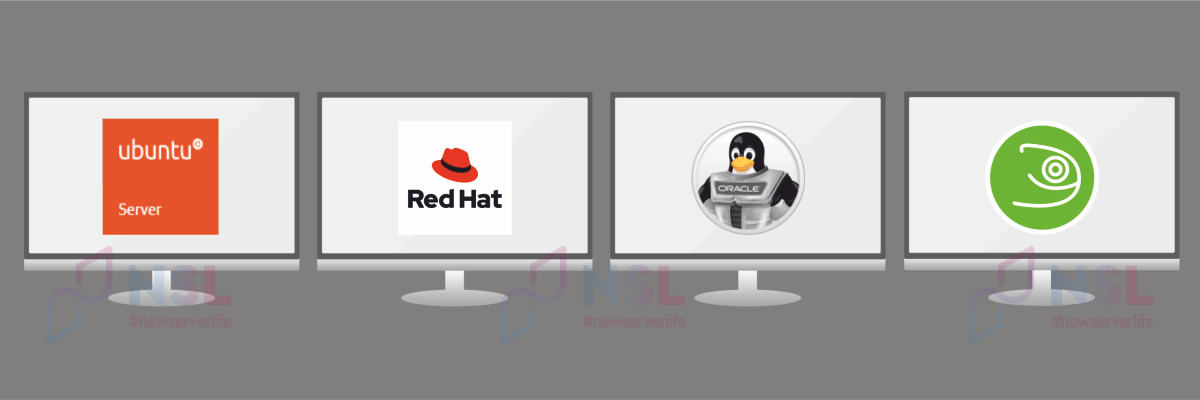
Server operating systems based on Unix / Linux are often used for:
- performing edge calculations,
- creating a cloud network infrastructure,
- processing large amounts of data.
Moreover, there are quite a large number of free and reliable Linux distributions for the server.
Ubuntu Server
Base: Debian.
Architecture: x86-64, ARM v7, ARM64, POWER8, POWER9, IBM s390x (LinuxONE).
Advantages:
- Customization flexibility;
- Easy installation;
- High performance;
- Long-term commercial support;
- Big documentation base.
Ubuntu Server is a very popular distribution that appears in almost every ranking of the best Linux server OSes. This version of Ubuntu has a strict quality and usability standard.
This distribution offers all the necessary tools for the full administration, deployment and protection of the server infrastructure.
Ubuntu Server (Starting from version 20.04 LTS) has the following helpful security options:
- Own VPN WireGuard,
- SSH with two-factor authentication,
- Improved and simplified file access control based on AppArmor3 names.
Red Hat Enterprise Linux (RHEL)
Base: Fedora
Architecture: aarch64, i386, ia64, IBM Z, ppc, ppc64el, s390, s390x, x86_64.
Advantages:
- Full free version is included;
- High security and reliability;
- High quality;
- Multiplatform;
- Optimization for cloud infrastructure.
RHEL is the only GNU/Linux OS that provides up to 13 years of paid support for users. The Linux server OS is designed to work with the following digital transformation technologies:
- big data analytics,
- edge computing,
- machine learning, etc.
At the beginning of 2021, the official launch of the free version of RHEL was announced by Red Hat. This version will be designed for the needs of small businesses.
Oracle Linux
Base: Red Hat.
Architecture: aarch64, x86_64.
Advantages:
- Commercial version with technical support at the best price;
- High security and reliability;
- 2 kernels to choose from (Red Hat Compatible Kernel (RHCK) and Unbreakable Enterprise Kernel (UEK);
- Binary compatible with RHEL.
In 2020 after the end of support for CentOS 8 by Red Hat, Oracle Linux rating among users has greatly increased. Moreover, Oracle has released a script to quickly migrate users from CentOS 8.
SUSE Linux Enterprise Server (SLES)
Base: openSUSE
Architecture: armv7, armv8, IBM Z, Power, x86_64.
Advantages:
- Improved technical support;
- High adaptability;
- Integration with virtualization tools;
- Wide range of documentation.
This server operating system gives administrators and developers an opportunity to deploy very important computing processes in the edge computing space, on local machines, in the public cloud.
Flexible adaptability of APIs allows SLES applications to work with a wide variety of available servers, architectures, storage, and networking options. SLES is also optimized for widely used hypervisor technologies as well as cloud platforms (for example: VMware vSphere, Xen, Microsoft Hyper-V, KVM).
Best Linux distro for Windows and MacOS users

Zorin OS
Base: Debian, Ubuntu (LTS).
Architecture: x86_64.
Advantages:
- High speed;
- Adaptive desktop;
- Lightness;
- Launching programs for Windows and macOS.
This distribution was designed for beginners to use. Zorin OS comes with Zorin Appearance. It gives users the ability to run many Windows and macOS programs.
Xubuntu
Base: Debian, Ubuntu.
Architecture: i686, x86_64.
Advantages:
- High speed, stability and reliability;
- Easy configuration and installation;
- Lightness;
Xubuntu is focused on adaptability, simplicity and reliability, as well as accessibility for a wide range of users. Xubuntu is designed for the optimal balance between performance and light weight.
Moreover, the solution of most common tasks does not require the installation of additional software for applications. This makes Xubuntu a good option for modern machines as well as for weaker or older devices.
elementary OS (eOS)
Base: Debian, Ubuntu.
Architecture: x86_64.
Advantages:
- 100 % compatibility with Ubuntu repositories and packages;
- Easy installation;
- High performance speed;
- Small amount of resources used.
This distribution is common among users migrating to Linux from proprietary platforms. Each assembly includes the necessary set of embedded apps and allows to install additional programs through the embedded package manager AppCenter (latest versions of Gtk+, Samba, Openssh, Python, Openssl, Vim, Perl, Xorg-server tools are included).
Best Linux distro for gaming

Linux distributions are very popular among gamers.
Lakka OS
Base: LibreELEC.
Architecture: aarch64, armhf, i386, x86_64.
Advantages:
- Good optimization;
- Lightness;
- Small amount of resources used.
Lakka OS is based on LibreELEC and is run by the RetroArch console emulator. This distro can be run from various devices (Raspberry Pi boards, PC, WeTek Play devices, etc).
Lakka OS performs the following helpful functions for gamers:
- support for wireless joysticks,
- autosave,
- multiplayer mode,
- rewind,
- joystick recognition and many others.
Pop!_OS
Base: Debian, Ubuntu.
Architecture: x86_64.
Advantages:
- Easy access to Steam and Lutris;
- Easy to use;
- Separate ISOs for Nvidia and AMD video cards are included;
- Simple technology of use.
Pop!_OS is considered one of the best Linux distros for laptops. The best performance with separate extensions is provided by a customizable shell of the GNOME user environment.
Using the embedded Pop! _Store you can directly install tools such as GameHub, Lutris and Steam in Pop! _OS.
Garuda Linux
Base: Arch Linux.
Architecture: x86_64.
Advantages:
- High efficiency;
- Large number of customization options;
- Wide range of graphical interfaces;
- Simple installation of applications.
Garuda provides handy Calamares graphical installer for gamers. It gives an opportunity to install everything you need for games (WINE, Steam, Winetricks, PlayOnLinux, DXVK Gamehub, Lutris and Proton apps are included).
Best lightweight Linux distro

Off-the-shelf lightweight Linux distributions can get the job done as efficiently as possible while consuming a small amount of resources. This option will be especially convenient for owners of older laptops and computers which performance is lower.
Puppy Linux
Base: Linux kernel.
Architecture: i686, x86_64.
Advantages:
- Simple technology of use;
- High performance speed;
- Extended functionality;
- Easy to customize.
Puppy Linux is a family of small GNU/Linux distributions. They are built using the same tools and have common operating principles. This distribution retains its full functionality even with minimal sizes and can also be loaded directly into RAM.
Peppermint OS
Base: Debian, Lubuntu (LTS).
Architecture: i686, x86_64.
Advantages:
- Convenient and stylish interface;
- Simple technology of use;
- Integration with cloud infrastructure;
- High performance speed.
Peppermint OS combines the minimalism of basic tools and features with the attractive interface of an LXDE/XFCE hybrid desktop.
Peppermint OS has an important feature – web orientation, which is presented in the form of a hybrid cloud infrastructure SSB (Site Specific Browsers).
Peppermint OS is one of the fastest and lightest Linux distributions. Most apps in Peppermint OS are launched through a special Ice utility.
Lubuntu
Base: Debian, Ubuntu.
Architecture: i686, x86_64.
Advantages:
- Energy saving;
- High performance;
- High performance speed;
- Support for Ubuntu software and repositories.
This distribution successfully combines a stylish interface, lightness and high performance.
Since version 20.04 LTS Lubuntu includes essential applications for regular use, including a PDF reader, multimedia players, an office suite, an image editor.
Conclusion
Thus, each Linux distribution has its advantages and disadvantages.
The result of this article is a detailed overview of the best Linux distributions for various purposes, as well as practical areas in which these systems can be useful.
Specialists of our company are ready to help you purchase the server and select the necessary server configuration for any required task.








